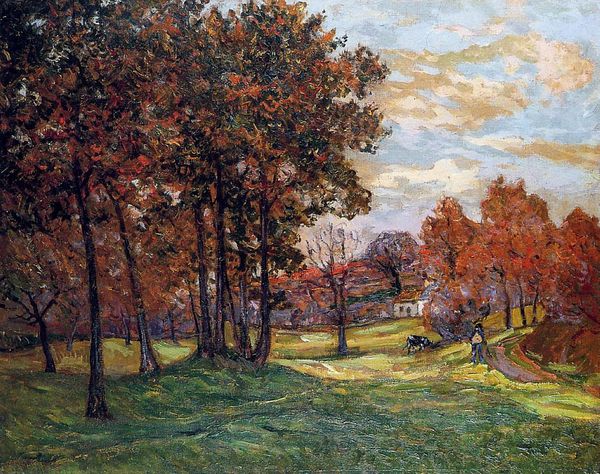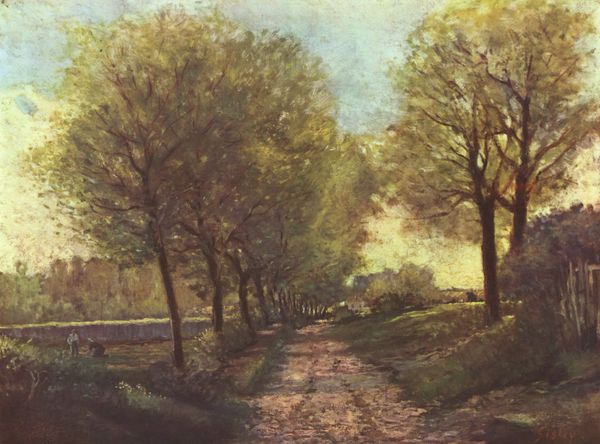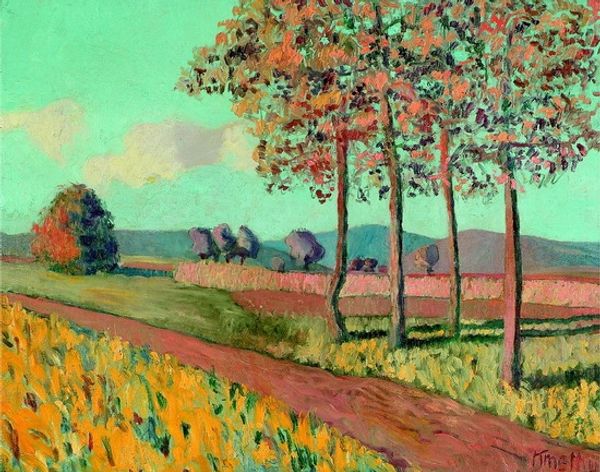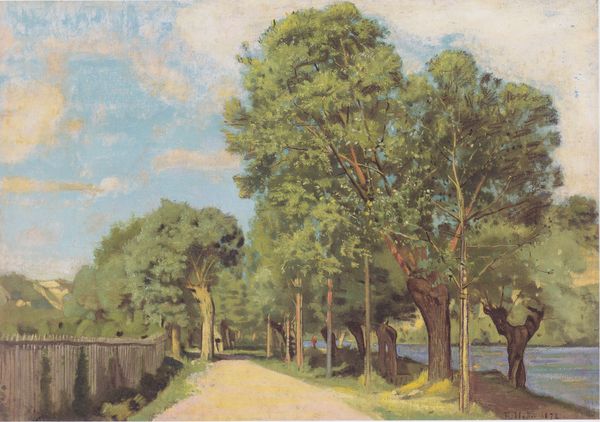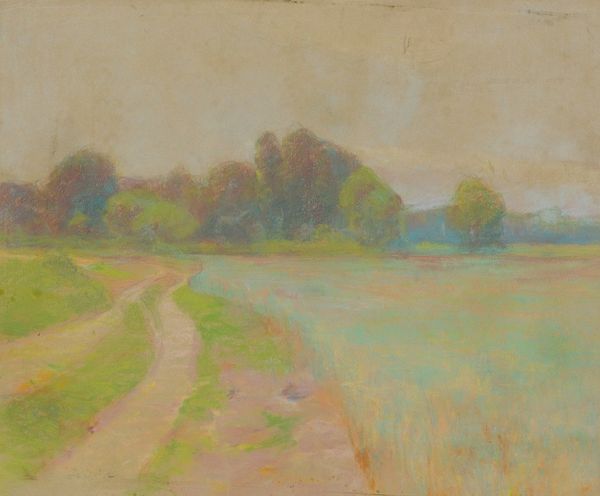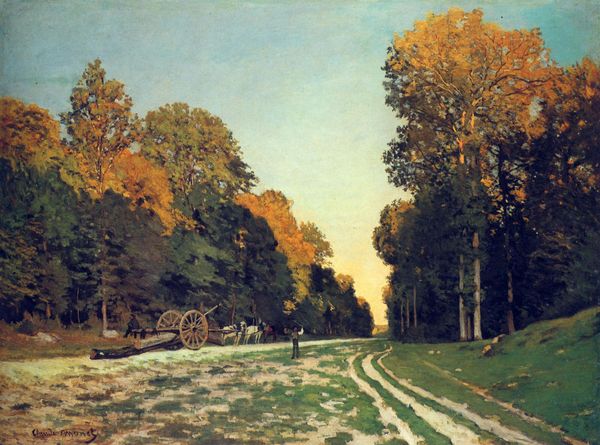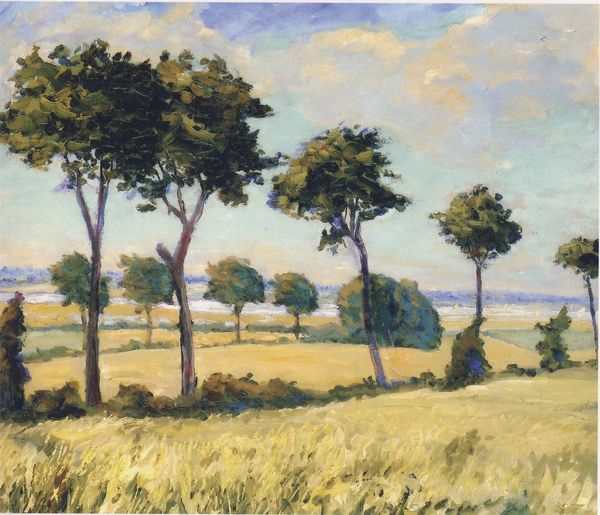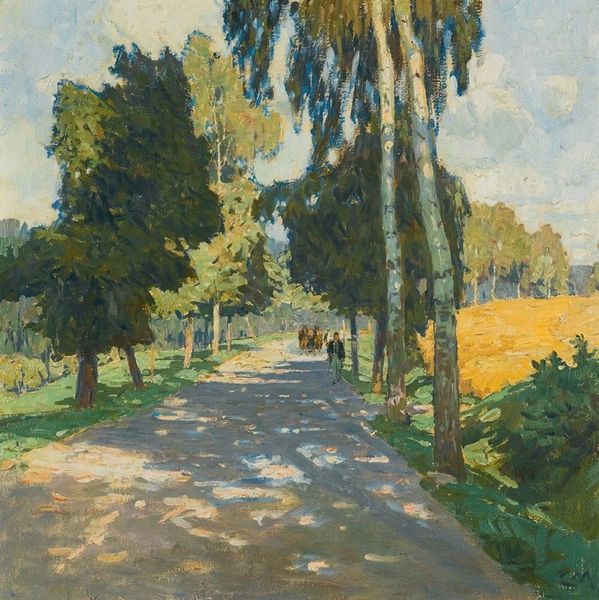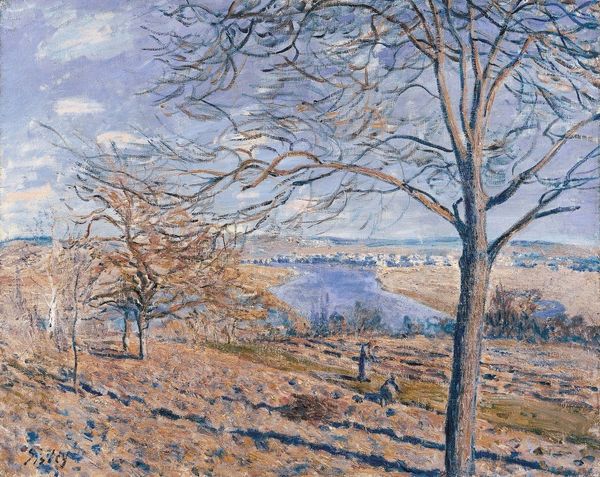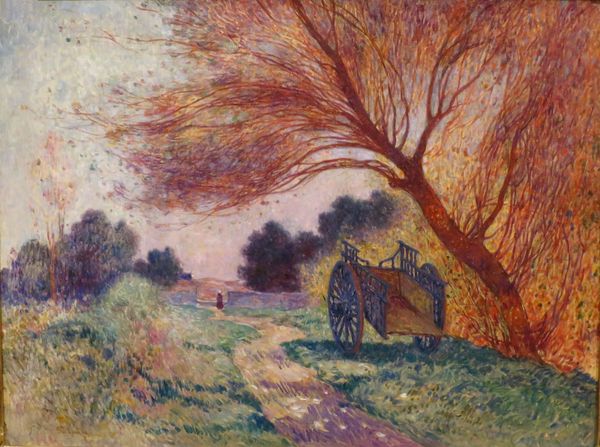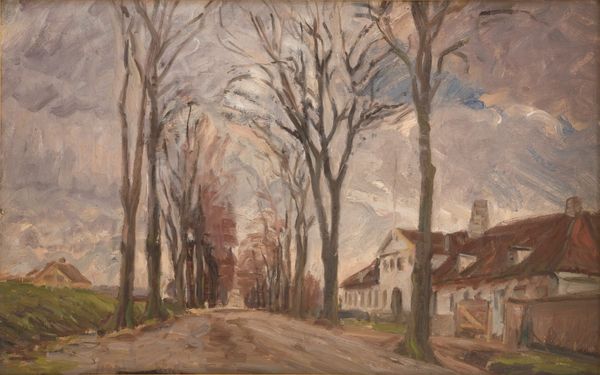
Dimensions: 62.5 x 44.5 cm
Copyright: Public domain
Editor: So, this is Ferdinand Hodler's "Autumn Evening," painted in 1892, using oil paint. There's a path covered in leaves that draws my eye straight to the horizon. It feels peaceful, maybe a little melancholic. What do you see in this piece from a formal perspective? Curator: Focusing on the formal elements, notice how Hodler uses a strict, almost symmetrical composition. The trees on either side of the path create a visual frame. What effect does this structure create, do you think? Editor: It makes the perspective feel really deep and the road feel more pronounced, but also somewhat rigid. Is there something more going on in the arrangement of colours? Curator: Precisely. Note how Hodler utilizes complementary colours: the oranges and browns of the leaves and the sunset contrasting against the greens of the fields and the blues of the sky. It generates a chromatic tension that elevates the structure. Also, observe the texture; short, broken brushstrokes create a vibrant, almost shimmering surface, reflecting the fleeting light. Editor: That makes sense. The brushstrokes do add a lot of movement, which balances out the rigidity that the frame adds. The yellow-ish hue also appears to dominate. Curator: Yes. How do you see that hue in the composition? Editor: Well, I noticed the way the leaves are arranged around the canvas as well as how the grass is affected and lit by the atmospheric setting; that creates an interesting distribution that complements the symmetrical visual structure. It shows nature, but highlights shapes that man would engineer too. Curator: Indeed. Ultimately, Hodler orchestrates colour, form, and brushstroke to depict the atmosphere and create an echo chamber within the landscape. Editor: I learned that even a landscape painting can be understood through its structure and arrangement! Curator: And that Hodler’s seemingly simple scene is, in fact, a complex orchestration of formal elements.
Comments
No comments
Be the first to comment and join the conversation on the ultimate creative platform.
